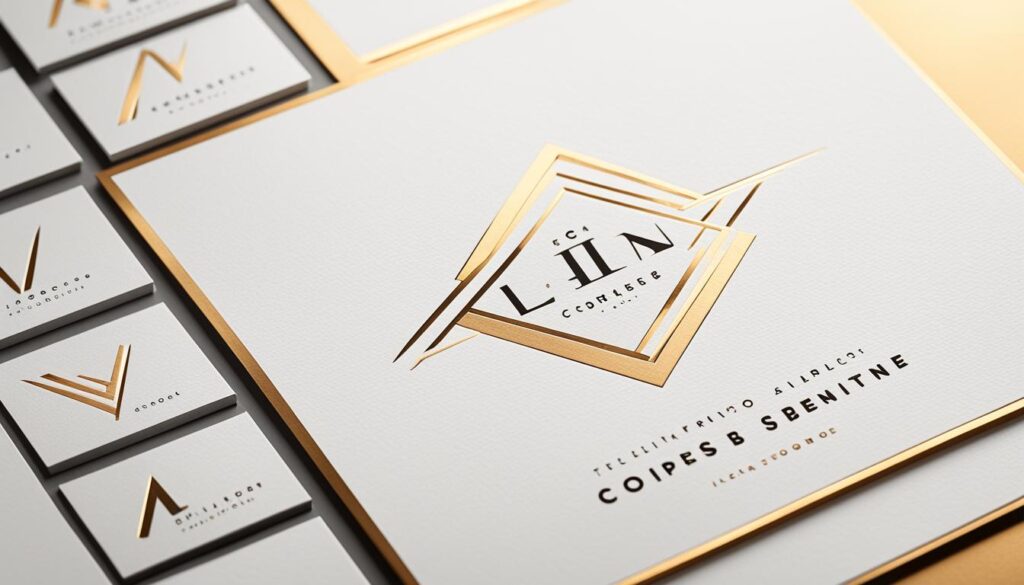Are you dreaming of turning your passion for aesthetics into a thriving profession? If you’re curious about how to open an interior design company, you’re in the right place. Over the past decade, many have succeeded in the interior design industry, including myself, transforming a humble start into a multiple 7-figure annual revenue without any prior design qualifications or existing client base. The growth of DIY projects and online design resources has fueled demand for professional services, creating an exciting landscape for newcomers.
This interior design company startup guide will cover all essential phases of starting your own business—from understanding the market to crafting a robust business plan. You’ll find that the journey requires not just talent but also hard work, consistency, and a disciplined approach. Be prepared to juggle responsibilities, such as family commitments, while dedicating the effort necessary for early-stage growth.
Before leaving your full-time job, ensure that your business generates stable revenue. Be aware that approximately 60,000 interior designers operate in the U.S., with a significant portion self-employed, showcasing both the opportunities and challenges in this field. It’s crucial to continuously learn and improve your skills, especially when starting with little experience. With this guide, you’ll enhance your understanding of marketing, accounting, and branding, charting your path to success. Are you ready to dive in?
Key Takeaways
- Success in interior design requires a mix of creativity and strategic planning.
- Starting without qualifications is possible, but commitment and learning are key.
- Understanding business essentials like marketing and accounting is crucial.
- Consider your work-life balance when transitioning from employment to entrepreneurship.
- Stable revenue is vital before leaving your full-time job for your new business.
- Continuous skill development will help you stand out in a competitive industry.
Understanding the Interior Design Market
Gaining a solid understanding of the interior design market lays the foundation for your success as a designer. The more you know about current interior design trends, the easier it becomes to create appealing spaces that resonate with clients. Additionally, recognizing your target audience for interior design is crucial for tailoring your services and marketing strategies.
Current Trends in Interior Design
As an interior designer, staying informed about current interior design trends will enable you to present innovative ideas to your clients. Popular trends you should consider include:
- Sustainable design: Focuses on eco-friendly materials and practices, appealing to environmentally-conscious clients.
- Minimalism: Prioritizes clean lines and functional spaces, perfect for clients seeking simplicity.
- Technology integration: Incorporates smart home features, meeting modern lifestyle demands.
Understanding these trends enhances your ability to deliver stylish and functional solutions, positioning you as a knowledgeable expert in the interior design market.
Identifying Your Target Audience
To effectively build your business, recognizing your target audience for interior design is essential. Instead of trying to serve everyone, focus on defining your ideal client. Consider:
- Demographics: Age, gender, location, and income level.
- Preferences: Design styles, color schemes, and specific needs.
- Pain points: Challenges they face in their living spaces.
This targeted approach helps you attract clients who appreciate your unique style, fostering deeper connections that can lead to increased satisfaction and loyalty.

By combining knowledge of current trends with a clear understanding of your target audience, you can effectively position your business within the competitive interior design market, paving the way for future growth and success.
Creating Your Interior Design Business Plan
A well-crafted interior design business plan serves as a vital starting point for your company. It provides essential clarity, sets specific goals, and outlines a roadmap for your business processes. Understanding the importance of business planning can significantly influence your success and direction.
Importance of a Business Plan
The interior design business plan is not just paperwork; it creates a structured approach to launching your enterprise. By conducting thorough market research, you can assess if there’s sufficient demand for your services at the price point you desire. This exploration informs your positioning within the market, aligning your unique offerings with current trends. Seeking funding becomes more straightforward when you present a detailed business plan, as it showcases your serious commitment to financial stability and growth.
Key Elements to Include in Your Plan
Your interior design business plan should comprehensively cover various important topics. Below are some essential elements to include:
| Element | Description |
|---|---|
| Market Analysis | Evaluate your target audience demographics, service demand, and competitive landscape. |
| Financial Plan | Detail startup costs, ongoing expenses, revenue projections, and profit margins. |
| SWOT Analysis | Identify strengths, weaknesses, opportunities, and threats to strategically position your business. |
| Marketing Strategy | Outline advertising methods, including online and traditional channels, to reach potential clients. |
| Operational Plan | Define your business structure, ideal location, staffing needs, and necessary equipment. |
Integrating SMART goals into your financial plan can lead to success. These goals should be Specific, Measurable, Attainable, Realistic, and Time-related to ensure clarity and accountability. Additionally, understanding potential sources of funding will help manage cash flow effectively.
Creating a compelling business plan will not only guide your actions but also lay a strong foundation for your interior design business, ensuring a well-planned entry into this expanding industry.

How to Open an Interior Design Company
Starting your journey in opening an interior design company involves thoughtful planning, especially in choosing a niche and crafting appropriate service offerings. Both steps serve as the foundation for a thriving business that meets the specific needs of your clients. Once you have defined your niche and service offerings, you can begin to establish your brand and reach out to potential clients. Whether you specialize in minimalistic Scandinavian design or cozy bohemian chic, having a clear focus will attract clients looking for your expertise. With the right approach, you can transform your living room into a stylish and functional space that reflects your unique design aesthetic.
Choosing a Niche
Selecting a specific niche within the interior design market sets you apart from your competitors. You may delve into various areas of specialization, such as:
- Sustainable design
- Residential spaces
- Commercial interiors
This approach allows you to position yourself as an expert in niche interior design markets, attracting clients who seek your unique expertise. Focusing on a specific niche can enhance your marketing efforts and increase client trust.
Crafting Your Service Offerings
Once you identify your niche, it’s time to define your service offerings for interior design. Consider developing a variety of packages that cater to diverse client needs. Some common services can include:
- Designing kitchens and baths
- E-design services
- Full interior design experience
- Collaboration with contractors, manufacturers, and suppliers
Creating tiered service packages simplifies the decision-making process for clients. For instance, you might offer a high-end design package alongside a more affordable basic option, maximizing your reach in the market. Clear service offerings help clients understand what to expect and streamline your operations as well.

Selecting Your Business Name and Structure
When embarking on the journey of starting your interior design firm, selecting a fitting business name and structure is crucial. A well-chosen business name for interior design sets the stage for your brand identity, while understanding the appropriate business structure ensures legal and financial stability.
Tips for Choosing a Memorable Name
Choosing the right name for your design firm involves several important considerations:
- Reflect your style: Your business name should encapsulate your design philosophy, whether it’s modern, classic, or eclectic.
- Keep it simple: Aim for a name that is easy to spell and remember, making it convenient for clients to refer you.
- Check availability: Ensure the name is available for domain registration, allowing for consistency across your online presence.
- Consider future growth: Avoid overly specific names that may limit your scope as your design firm evolves.
Understanding Business Structure Options
Choosing the right business structure is essential for the success of your firm. Here’s a brief overview of common options:
| Business Structure | Pros | Cons |
|---|---|---|
| Sole Proprietorship | Easy to set up, complete control | Unlimited personal liability |
| Limited Liability Company (LLC) | Limited liability, tax flexibility | More paperwork, fees involved |
| Corporation | Limited liability, enhanced credibility | Complex regulations, double taxation |
| Partnership | Shared responsibilities, combined resources | Joint liability, potential for disputes |
Each structure has unique implications for liability, taxation, and regulatory requirements. Performing careful research into choosing business structure can help you position your interior design company for long-term success. Consulting with a legal advisor is recommended to navigate these complexities effectively.

Licensing and Legal Requirements
Starting your interior design business involves navigating various legal requirements for interior design. Each state has its own regulations, so understanding and complying with these is essential for a successful launch. Most importantly, securing the necessary interior design licenses helps establish your credibility in the industry.
Obtaining Necessary Licenses and Permits
Research your state’s specific requirements to ensure compliance. For instance, in Indiana, the law mandates that interior designers register with the Indiana Professional Licensing Agency (IPLA) under Indiana Code § 25-20.7. Applying for registration involves:
- Submitting an application electronically to the IPLA.
- Paying a registration fee of $100.
- Providing accurate information under penalty of perjury.
- Understanding that registration remains valid for two years, with renewals also costing $100.
Further, if you plan to operate from home, make sure you’re aware of any zoning permits required by your local government. This due diligence ensures that your interior design business operates within the legal framework.
Importance of Insurance Protection
To protect your interior design business, obtaining proper insurance for design professionals is crucial. Different types of coverage provide safety from various risks.
- Professional Liability Insurance: Safeguards against claims from clients despite fulfilling your contractual duties.
- Commercial Auto Insurance: Essential if you use a vehicle for your design business.
- Property Insurance: Protects your assets and equipment from unforeseen events such as theft or damage.
Overall, understanding these licensing necessities and implementing appropriate insurance safeguards your business while complying with all relevant legal requirements for interior design.

Building Your Portfolio
As you embark on your journey in interior design, building an interior design portfolio is essential for demonstrating your skills and attracting potential clients. Start by showcasing design work that reflects your unique style and expertise. Utilize software programs like Foyr Neo to create visually appealing portfolios that encompass high-quality photographs of your completed projects. Including detailed descriptions of the highlights, challenges faced, and solutions provided for each project can effectively communicate your capabilities.
Showcasing Your Design Projects
When showcasing your design work, consider adding before-and-after comparisons to visually illustrate the transformations you’ve achieved. This kind of presentation not only highlights your creativity but also helps prospective clients visualize what you can do for them. Ensure your portfolio includes a diverse array of services, from paint palettes to 3D renderings, making it clear that you can tailor your services to meet specific needs, whether for residential or commercial spaces.
Gathering Client Testimonials
Another vital component in building your reputation involves collecting client testimonials. After finalizing each project, reach out to clients for their feedback on the experience and the outcomes. Displaying these testimonials prominently on your website can reinforce trust and credibility, significantly impacting your ability to attract new clients. Remember, authentic feedback not only strengthens your portfolio but showcases your commitment to providing quality service in the interior design industry.









